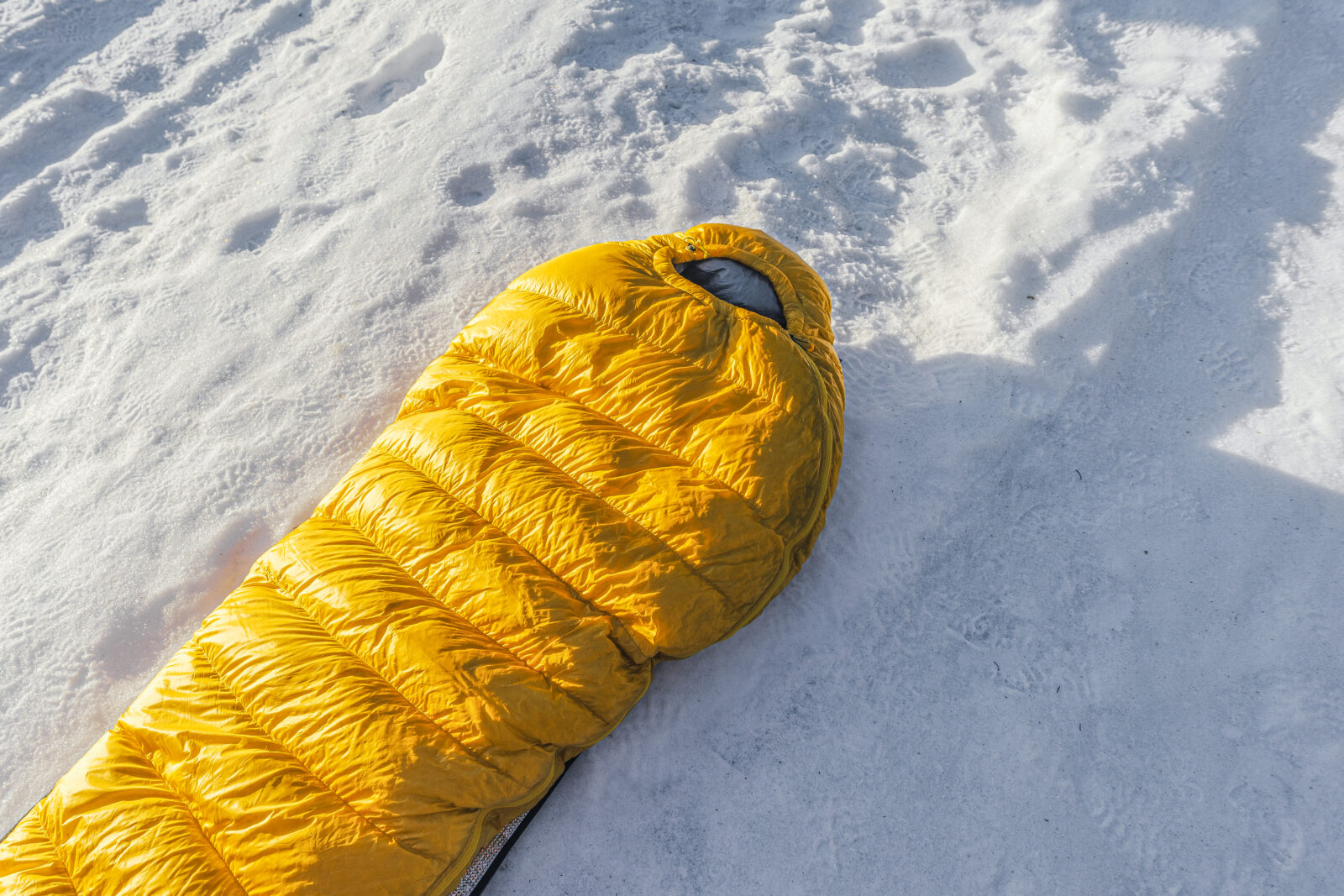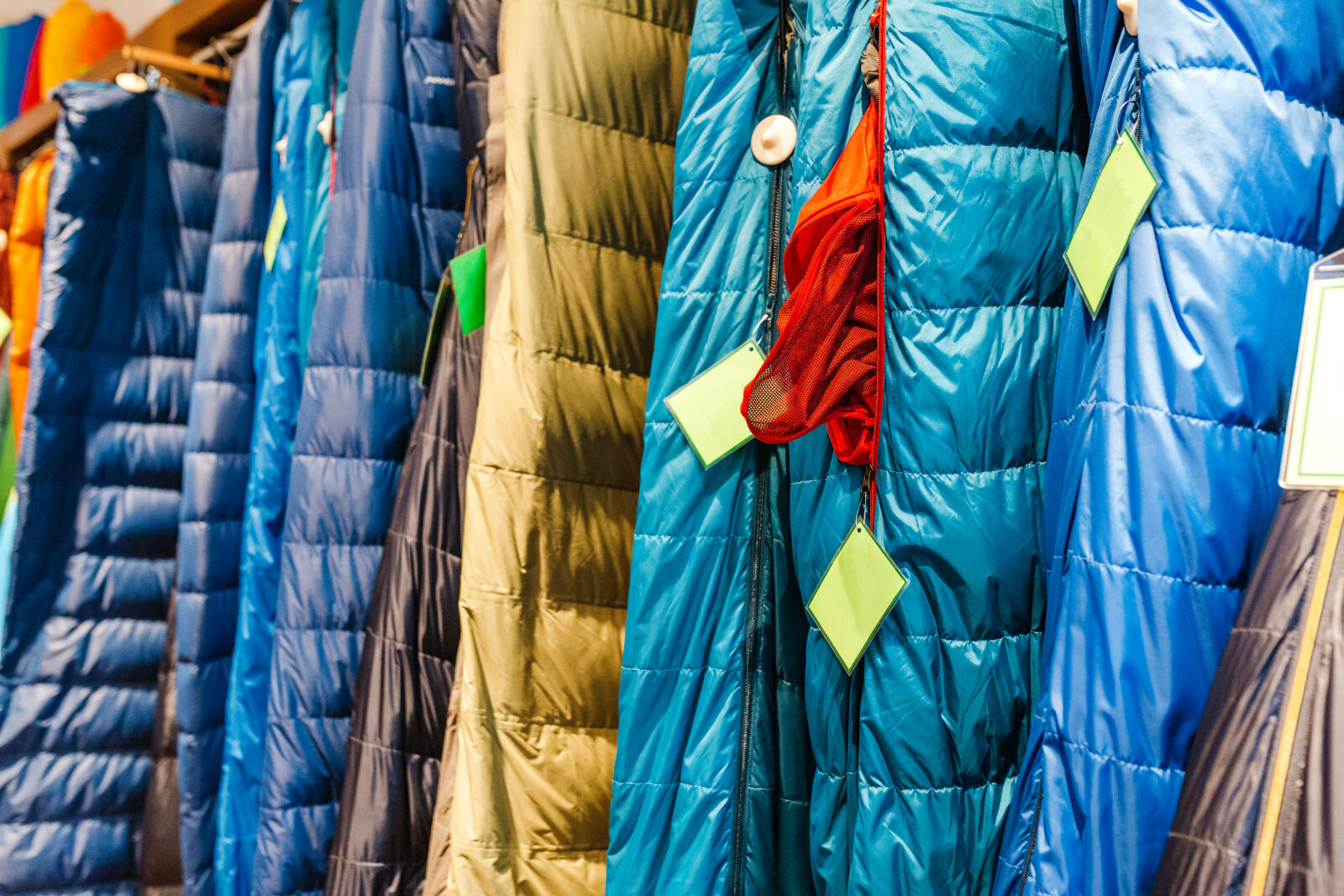A sleeping bag liner is an underrated piece of camping equipment. Many people consider it extra in their collection of camping gear. In an era when hygiene is more important than ever, a sleeping liner comes in handy anywhere you go.
It provides warmth during winter and increases your sleeping bags’ longevity. It also keeps you clean when you whip it out of your pack to use in hostels or hotels.
So what determines good quality over products that don’t deserve a second consideration?
That is where we come in, providing a complete guide to products and buying tips. Some of the important things to consider :
- Liner materials such as silk, cotton, Thermolite, and others provide added warmth but at the expense of weight.
- Temperature rating means the amount of warmth added to your sleeping system by the liner.
- Shape and weight are important since the liner needs to fit you snug to be comfortable and you don’t want it to add much weight to your pack.
Read More : 6 Things to Know Before Buying Sleeping Bag Liners
On this page, we’ll help you find the best sleeping bag liner to meet your needs.
Our top sleeping bag liner picks
| Model | Added Warmth | Insulation | Weight |
|---|---|---|---|
| Western Mountaineering Sonora Liner | 2°F / 1°C | Polyester | 5oz / 142g |
| Teton Sports Cotton Liner | 10°F / 4°C | Cotton | 12oz / 340g |
| Cocoon Silk Mummy Liner | 5°F / 2.8°C | Silk | 4.7oz / 133g |
| Big Agnes McKinnis Liner | 10-15°F / 4-8°C | 650-fill DownTek™ | 16oz / 454g |
| Sea to Summit Premium Silk Liner | Several degrees | Silk | 4.8oz / 136g |
| Sea to Summit Thermolite Reactor Liner | 14°F / 8°C | Thermolite® | 8.1oz / 230g |
| Therma-a-Rest Sleep Liner | 5°F / 3°C | Polyester | 11oz / 312g |
Western Mountaineering Sonora Liner
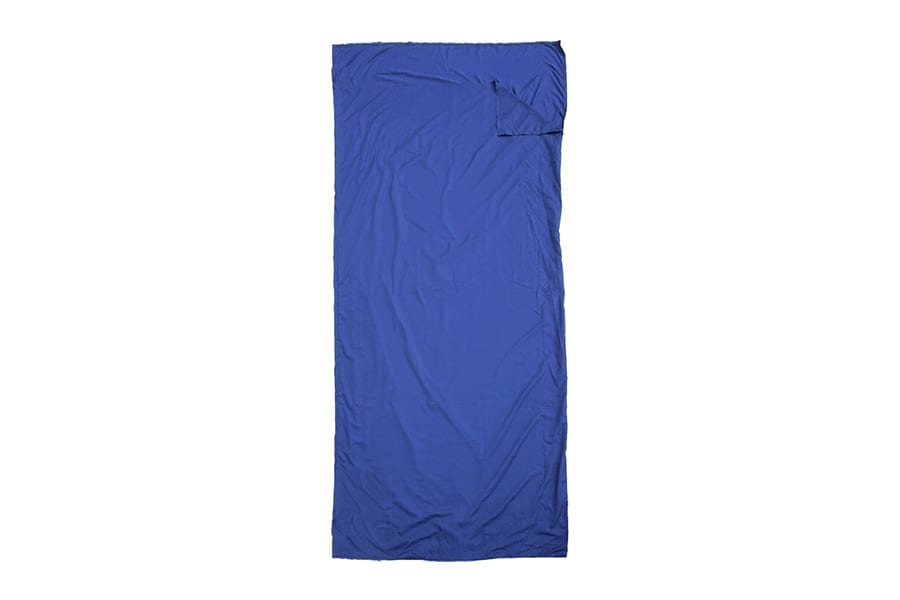
- Added Warmth : 2°F / 1°C
- Insulation : Polyester
- Weight : 5.0oz / 142g
Polyester is one of the more common materials used for bed sheets. The big marketing point with this bag liner is that even while you camp, you wake up feeling like you were in your bed.
The Western Mountaineering Sonora Liner is as manageable as possible. It doesn’t add as much warmth as the products above, but still a couple of degrees. It has the moisture-wicking capacity, though, to keep you dry no matter the temperature.
Another manageability factor; machine washability. Throw it in when you return from a trip to stop it from smelling like the musty version of a campfire.
There is a stuff sack that comes with the Western Mountaineering Sonora Liner to keep the packed size compact, 3” x 5.5”, or 7cm x 13cm.
What we like
- Moisture management with polyester.
- Stuff sack to store the liner in.
- Machine washable liner material.
What we don't like
- Not much warmth added by the liner.
Teton Sports Cotton Liner
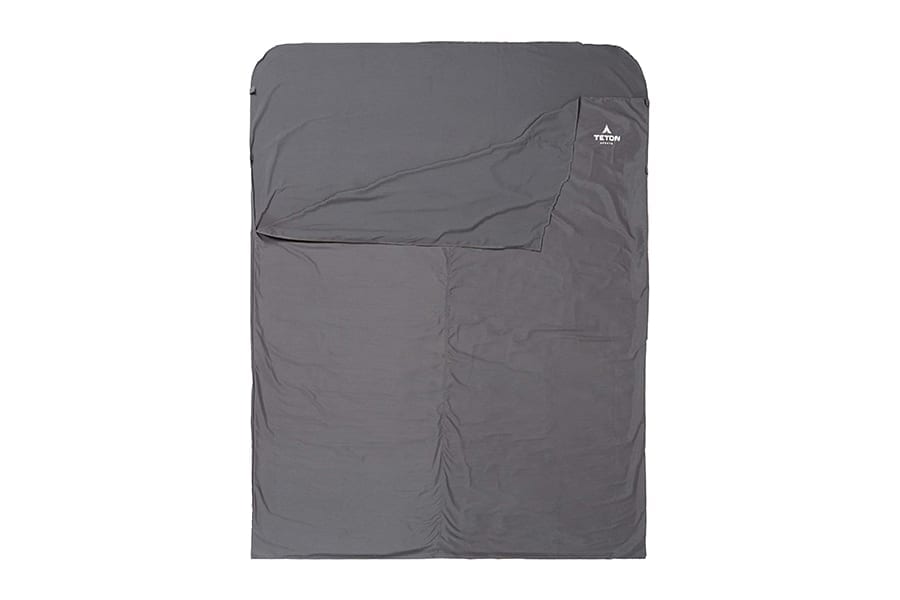
- Added Warmth : 10°F / 4°C
- Insulation : Cotton
- Weight : 12oz / 340g
The Teton Sports Cotton Liner performs well paired with other Teton products and on its own as a travel sheet.
This Teton cotton liner is a rectangular shape. Typically, this lack of form, like you would find in mummy bags, means that it is not as insulated. However, they did consider this while creating the product and have included safety velcro tabs to keep out any unruly cold air.
The Teton Sports Cotton Liner sets this bag apart by including a square pillow hood. The seams of the liner are reinforced to make it more durable. It is machine washable and dryable and comes with its one stuff sack.
What we like
- Velcro addition maintains insulation.
- Cheaper option makes it a cost effective option.
- Machine washable liner material.
What we don't like
- Poor insulation means not much warmth is added.
- Rectangular shape detracts from potential heat.
Cocoon Silk Mummy Liner
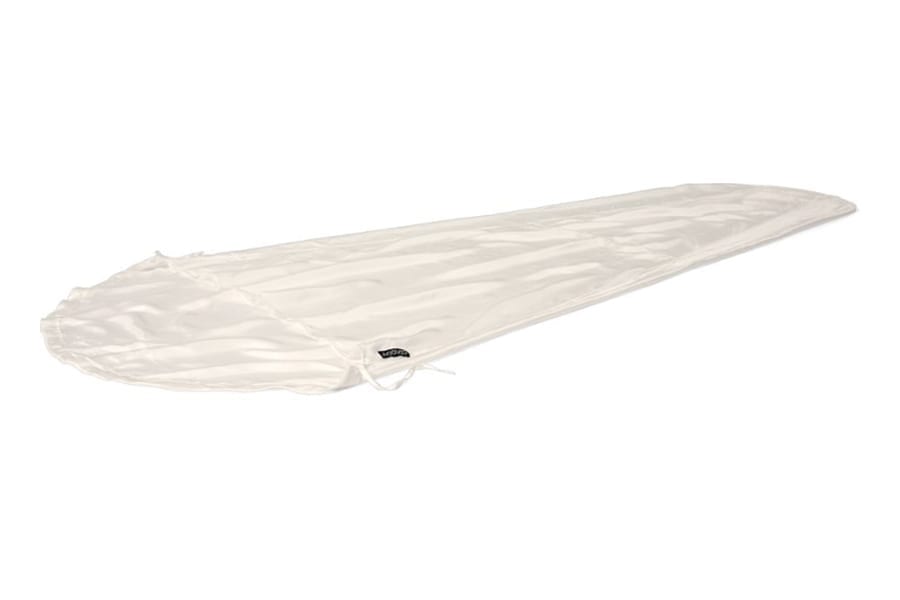
- Added Warmth : 5°F / 2.8°C
- Insulation : Silk
- Weight : 4.7oz / 133g
The Cocoon Silk Mummy Liner is a tapered bag that is truly as comfortable as it sounds. Silk is one of the best materials because of its adaptability. It responds admirably to various temperatures, making it comfortable to use in both hot and cold weather.
Not to mention the fact that it feels soft against your skin. Silk is capable of packing up small without weighing too much. It is easy to throw in with any bag and bring to a hotel or on a backpacking trip.
The Cocoon Silk Mummy Liner needs to be hand-washed, but it dries quickly, making an easy travel companion.
What we like
- Temperature adaptable regulates body temp no matter hot or cold.
- Texture feels smooth and soft to the skin.
- Lightweight material makes it easy to transport.
What we don't like
- Costly silk is one of the more expensive materials.
Big Agnes McKinnis Liner
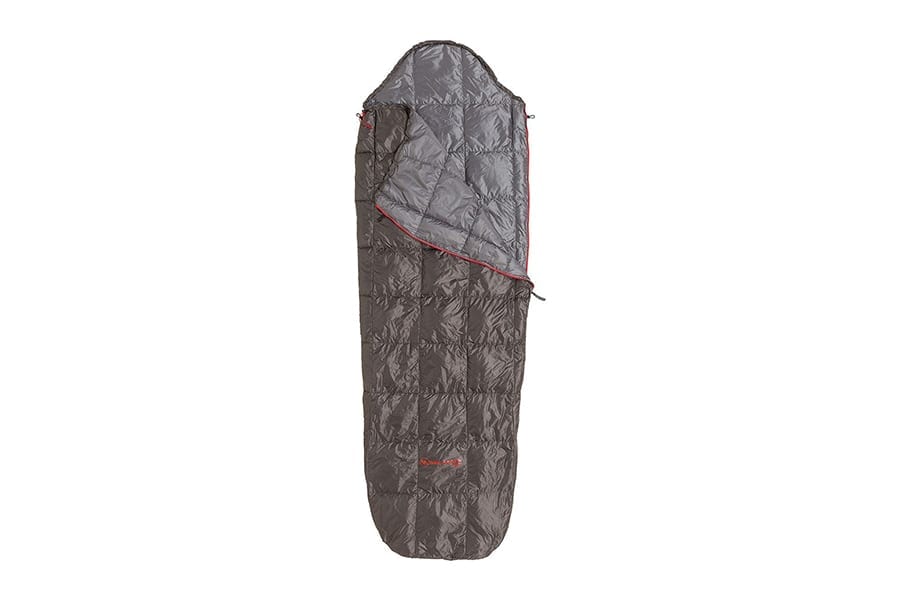
- Added Warmth : 10-15°F / 4-8°C
- Insulation : 650-fill DownTek™
- Weight : 16oz / 454g
Cold adventures take special preparation. If you want something that is still considered lightweight but warmer than the average liner, find one filled with down.
The Big Agnes McKinnis Liner makes their liner work as an extra layer of insulation inside of your bag or for stand-alone use.
One of the positive aspects to this down-filled bag is that it is water repellant. Even during damp weather conditions, this bag insulates you.
Part of the capacity of the Big Agnes McKinnis Liner to keep you so warm is the quilted exterior. The tight stitching and overlapping fabrics trap in your body heat. It still packs into the size of a soda can, although it is heavier than silk.
What we like
- Quilted fabric keeps it warm in any weather.
- Water-repellant for optimum moisture control.
- Dual Functions as a stand-alone or as a liner.
What we don't like
- Heavier than other similar silk products.
Sea to Summit Premium Silk Liner
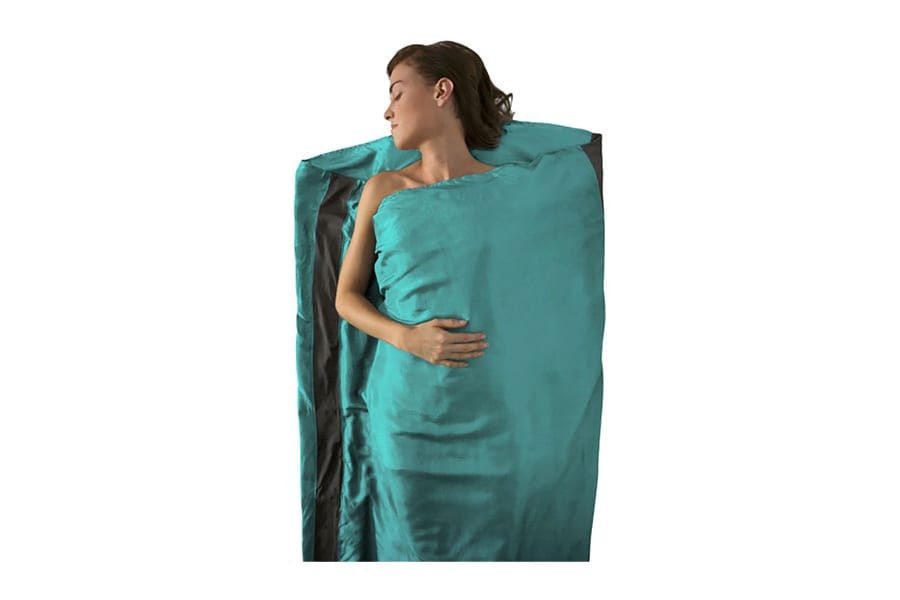
- Added Warmth : Several degrees
- Insulation : Silk
- Weight : 4.8oz / 136g
If you were taken in by the silk material above, then you might want a couple of different options to consider.
Sea to Summit provides a couple of different sleeping bag liners. They produce their silk liner with a ripstop design. The company uses a mix of polyester and Lycra for stretch panels. The purpose is to keep the bag moving with you as you move during the night.
Even though it is already lightweight, they want to make it even easier to pack up. They send a stuff sack along with their Sea to Summit Premium Silk Liner, although the small size can make it challenging to fit in.
You can machine wash this silk liner.
What we like
- Durable ripstop design increases longevity.
- Smooth and soft silk fabric
- Strong side panels stops it from crumpling.
What we don't like
- Small size of the stuff sack is difficult.
Sea to Summit Thermolite Reactor Liner
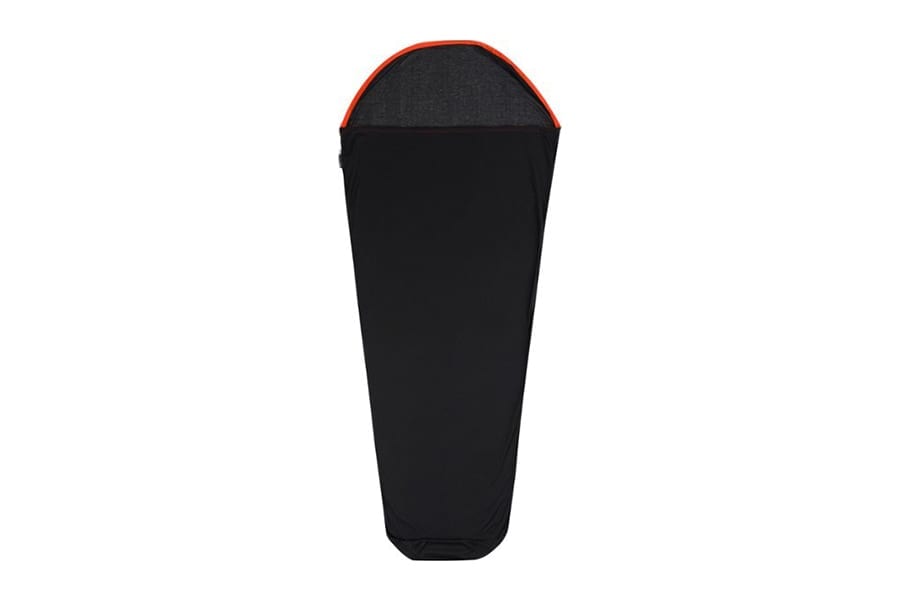
- Added Warmth : 14°F / 8°C
- Insulation : Thermolite® (Hollow-core fiber)
- Weight : 8.1oz / 230g
Other than their silk offering, Sea to Summit has also engineered an option for those who love winter activities. This liner is their warmest option.
They have developed a hollow-core fiber to manufacture this product. Think of the fur of a polar bear and then imagine a fleece that you snuggle into. It is how the bag traps the heat from your body to keep you warm.
The liner has a mummy shape with a foot box and a drawcord hood with a cord lock. It doesn’t have engineered side panels; it may slip around inside of your sleeping bag.
You don’t sacrifice texture for insulation in this bag, either, since the Sea to Summit Thermolite Reactor Liner is luxuriously soft.
What we like
- Thermolite insulation traps in body heat.
- Soft to the touch fleece.
- Dual functions as a stand-alone product or an addition.
What we don't like
- Doesn’t stay in place in the bag well.
Therma-a-Rest Sleep Liner
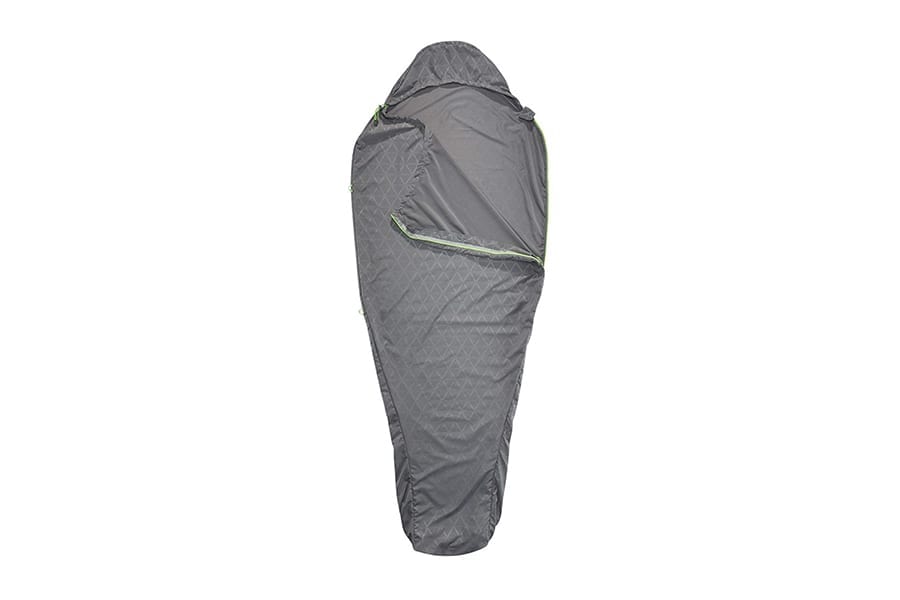
- Added Warmth : 5°F / 3°C
- Insulation : Polyester
- Weight : 11oz / 312g
The Therma-a-Rest Sleep Liner is brushed polyester. It adds up to 5° of warmth and gives you sanitary protection no matter where you are.
The soft sleep liner is machine-washable. They have made a versatile design, sewing in loops to incorporate more quilts or blankets and create an even warmer sleep system.
The zip has a ¾ design that makes it easier to enter and exit the bag. It comes in 3 sizes, small, regular, and long, so the Therma-a-Rest Sleep Liner fits you just right.
What we like
- Machine washable liner material
- Loops included for easily adding a quilt or a blanket
- Size customization with 3 different size options
What we don't like
- Heavier material than others
Sleeping Bag Liners Buying Guide
A sleeping bag liner seems like a very straightforward product. However, with every quality purchase comes quality research.
Here are 6 things you should know about sleeping bag lines before buying.
Liner materials
Each liner is made with one or more of the materials in our list. Each of them has its pros and cons that you should be aware of before buying.
- Silk is lightweight and packs down easily. It has a versatile range of uses since it insulates effectively in cold weather and wicks moisture away in hot weather. The Cocoon Silk Mummy Liner is an excellent example since it only weighs 4.7oz but is still so effective. Silk is typically the most expensive sleeping bag liner material.
- Cotton is an old-fashioned solution. It is more economical while still being warm and absorbent. It is a long-lasting and robust material. Cotton is not very lightweight and does not pack down to be small. For example, the Sea to Summit Silk mummy silk liner is 4.5” x 4” x 2.5” when folded down. The Teton Sports cotton liner packs down to 9” x 5”.
- Fleece is the warmest sleeping bag liners available. They can add up to 15°F of warmth, while others might only be 2 to 5°F. It is absorbent and very soft while still drying quickly. Fleece liners are moderate to expensive. They are also bulky, often weighing over a pound.
- Synthetic material liners, like the polyester seen in the Therm-a-Rest product, are better than others if you intend to use it in humid areas. They are breathable and highly absorbent. They are stretchier than other materials as well. They can be more expensive.
- Down is water repellent. It is excellent to have in humid or misty areas since it keeps you warm and dry. It is another material that adds a lot of warmth. For example, the Big Agnes McKinnis Liner made with down insulation adds up to 15°F. Down is often more expensive since it adds so much warmth. It doesn’t pack down as small as silk or synthetic liners do.
Temperature rating
The temperature rating is different from the method used for sleeping bags. Instead of being rated down to a specific temperature or range, sleeping bag liners are rated up to the amount of warmth they can add to an established sleeping system.
For example, the Cocoon Silk Mummy Liner and the Sea to Summit Premium Silk Liner only add around 5°F to a bag or by itself while the Big Agnes McKinnis Liner made with down adds up to 15°F.
Coolmax vs. Thermolite
Coolmax is a fabric made from polyester fibers, specifically to keep the user dry by pulling moisture from the skin. It helps to regulate body temperature.
Thermolite mimics the natural design of a polar bear’s fur, as seen in Sea to Summit’s Reactor Liner. It is lightweight but warm and comfortable. It also dries 50% faster than cotton products and keeps the user drier.
Mummy vs. rectangular shaped liner
The shape of the liner depends primarily on how you intend to use it.
If you know you want to use it with a sleeping bag, then buy a mummy shape. These taper from the shoulders or waist down to the feet. The form makes it easier for them to slide into a bag.
The rectangular liners are not as easy to fit. An example is the Teton Sports Cotton Liner. It is rectangular to fit with a line of their sleeping bags.
Liner weight
The weight is evident to most campers, because who wants to haul around an extra heavy bag?
As you saw in the material guide above, silk liners like the Cocoon Mummy Liner are the lightest, whereas the down and insulated fiber liners are the heaviest.
Sometimes you have to consider a swap between added warmth and weight since they are typically inverse. If you are camping in cold weather, it could be worth adding more ounces to gain a couple more degrees.
Additional features
Insect shield
Some lines include what they call an insect shield. During the thread stage of production, it is treated with a semi-permanent spray of permethrin.
This coat helps to repel all different kinds of insects. It lasts for around 70 washings before you want to consider reapplying.
Pillow insert
A pillow insert is a pouch at the head of the liner that helps to keep your pillow fixed in place.
When a pillow is in it, it prevents as much movement of the bag, so it doesn’t twist around you when you roll.
FAQ
How do I wash my sleeping bag liner?
It depends on the liner. A few can only be hand washed. Use lukewarm or cool water in a tub and soft fabric soap to soak and rinse it. Hang it out to dry.
Otherwise, you can machine wash according to the instructions on the liner.
Can I use the liner as a sleeping bag?
Yes. A sleeping bag liner makes an effective replacement for a sleeping bag in warm or hot weather. It is lighter and keeps you cooler while still protected.
They are also smaller to pack than a sleeping bag. Pair it with a sleeping bag in cold weather to add warmth.
Amanda Williams
Amanda Williams is a writer, plant-nerd, and outdoor enthusiast. She has traveled extensively, around the U.S., throughout Asia, Europe, and Latin America. Everywhere she treks, she takes time to enjoy the outdoors. John Muir is her hero. She aspires to inspire people to live better as he did.
